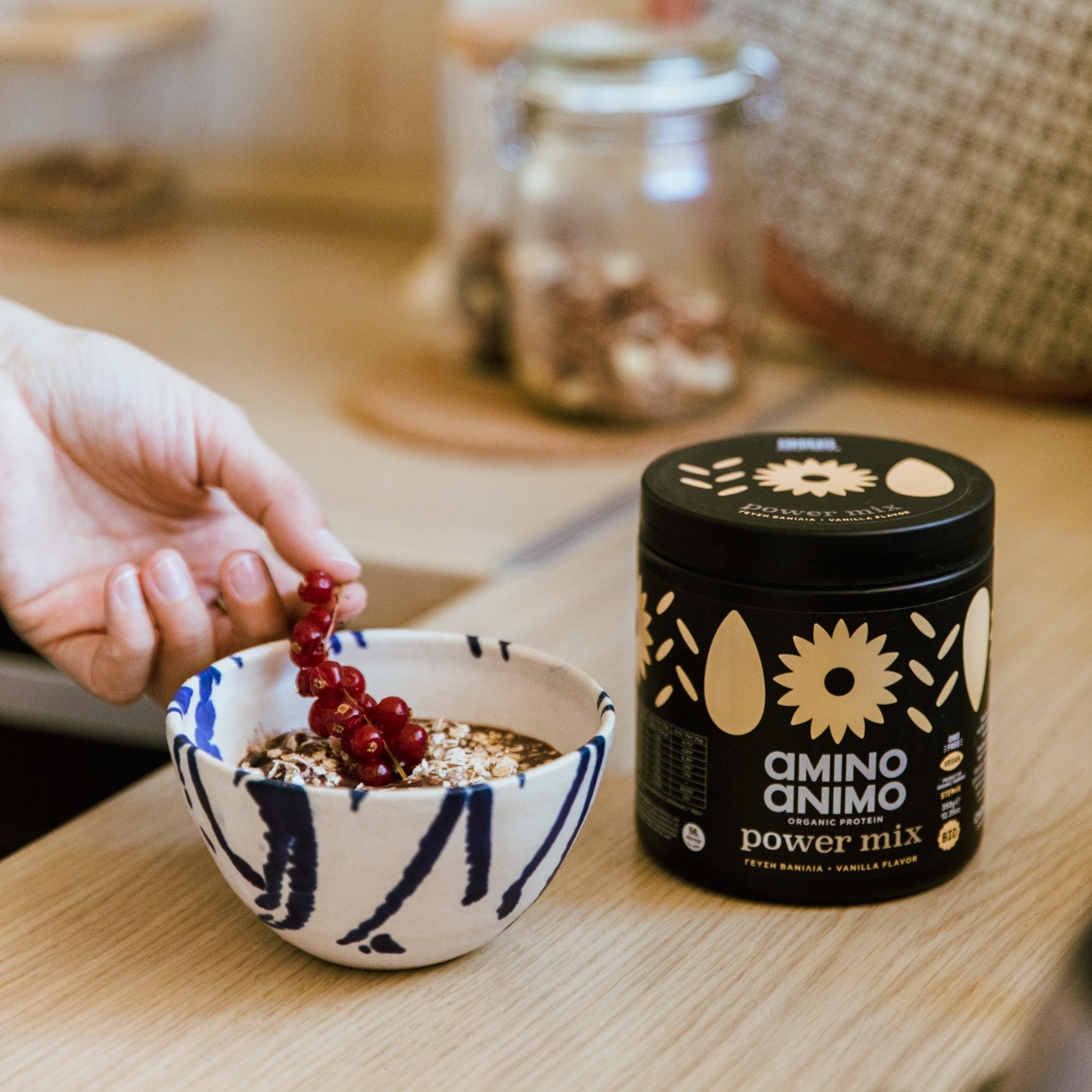By Joanne Adamidou, MS, RD Dietitian – Nutritionist & Biologist
Besides being a dietary trend or one’s personal training need, protein is a primary biomolecule that provides calories (kcal), thus energy in the human body, together with carbohydrates and fatty acids. Amino acids are the structural component of proteins. Of the 20 amino acids found in nature (including 2 recently characterized), 9 are essential amino acids, considered necessary to be taken through the diet since the body is unable to synthesize them.
PROTEIN: FROM BIOLOGY TO NUTRITION
If we think of proteins as structures made of colorful bricks that children like to play with, we could say that proteins (structures) taken in through our daily diet are broken down into amino acids (bricks) through digestion, which are then used to synthesize the desired proteins (structures), such as:
- Structural components of cell membranes, skin collagen.
- Actin and myosin of muscle tissue.
- Antibodies, which contribute to the body’s defense.
- Hemoglobin of red blood cells that circulate in the blood, transporting inhaled oxygen.
- Enzymes catalyzing biochemical reactions, and hormones such as insulin that is produced by the pancreas and plays a primary role in carbohydrate metabolism.
Unlike carbs and fats that serve as fuel, proteins are organic matter with a functional, endocrine and immune role, therefore pose a significant nutritional need.
PROTEIN SOURCES AND TOP COMBINATIONS
Proteins are an integral part of a balanced diet for both children and adults, and are found in the following foods that you can include in your daily diet in a variety:
- Animal food sources, such as red meat and poultry, fish, shellfish and seafood, egg, milk, cheese, yogurt and kefir.
- Plant-based sources, such as legumes, hummus, nuts and seeds, tahini and peanut butter, quinoa.
Quality vegetarian dietary combinations that ensure intake of all the essential amino acids along with providing satiety and complete nutrition, are the following:
PROTEINS WITH CARBOHYDRATES AND HEALTHY FATS
- Slice of bread with hummus and avocado with a squeeze of lemon
- Green salad with cherry tomatoes, olive oil, balsamic vinegar and pine nuts
- Yogurt with walnuts or flaxseed, fruit slices and honey
- A handful of nuts with a glass of kefir (vegan option available)
- Fruit smoothie with chia seeds and AMINO ANIMO protein in plant-based milk
- Fruit salad with tahini
- Banana slices topped with peanut butter, alone or on a slice of wholegrain bread
COMPLETE PLANT PROTEINS
- Colorful salad with quinoa, red peppers and olive oil
- Roasted vegetables with cherry tomatoes, tofu and almond slivers
- Fruit smoothie with AMINO ANIMO protein in plant-based milk
PULSES WITH WHOLEGRAIN
- Lentils with rice
- Tortillas with red beans, tomato, lettuce and avocado, sliced or as a guacamole
- Split peas with raw or caramelized onion, choice of salad, rye or wholegrain bread
- Green salad with black-eyed peas, red peppers, corn and rye or wholegrain bread
- Tortilla with lemon hummus and vegetable sticks, such as carrot, celery and cucumber
- Banana and kiwi smoothie with AMINO ANIMO protein and oats in plant-based milk
The aforementioned food combinations can be calorie-reduced calorically if weight management is a concern, or further enriched to serve the nutritional needs and performance goals of athletes, post-workout or in general.
So what is your own goal? Nutrition involves balance, and always entails taste and a unique experience, so it is good to discuss your individual protein needs with your nutritionist, as well as the food combinations that suit your personal taste preferences and serve your schedule.
REFERENCES
Hertzler et al. (2020) Plant Proteins: Assessing their nutritional quality and effects on health and physical function.
Nutrients, 12 (12): 3704.
Lopez and Mohiuddin (2023) Biochemistry, Essential Amino Acids. StatPearls Publishing LLC.
Wu (2016) Dietary protein intake and human health. Food Funct, 7 (3): 1251-65.
